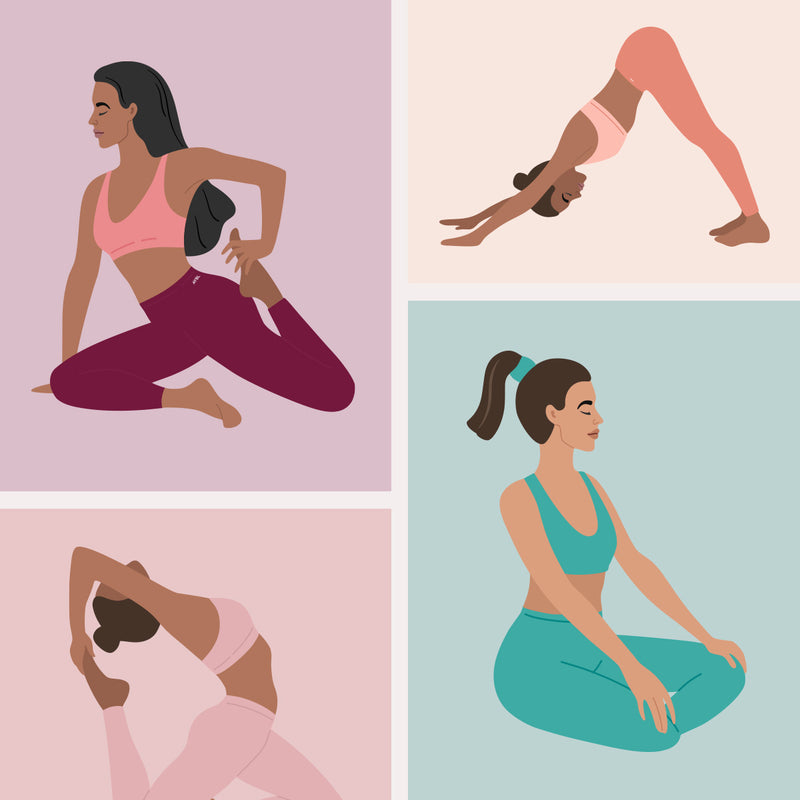
How To Improve Your Flexibility & Range Of Motion
We all know that exercising and keeping active is important, but what about flexibility?
While many of us are familiar with cardio and weight training, mobility and flexibility often get overlooked - and despite what you may have heard, they aren’t just for gymnasts and yogis.
Agreed, mobility is not as ‘attractive’ as hip thrusts or chest presses - but then again, neither is hobbling around due to a decreased range of movement and achy joints. We’re calling it - healthy joints over a six pack any day.
So, if you’re wondering how to improve your range of motion, so you can keep checking in at the gym and smashing your workouts, here’s what you need to know.

ADD STRETCHING TO YOUR ROUTINE
If stretching isn’t already part of your workout routine, then it definitely should be. But the real question isn’t whether you should be doing it, it’s when you should be doing it.
Well, it all comes down to what you want to achieve. If you stretch before exercise, it can weaken muscles in the immediate future, but increase your range of motion. If you’re really looking to up the ante in terms of your flexibility during your next workout, then stretch beforehand.
If you want to increase your flexibility overall, not just for the next hour or less, it can be more rewarding to stretch once you’ve warmed up. Stretching once your muscles are warm and ‘flexible’ can be more effective at increasing your power and speed and helping to prevent injury.
Whatever you decide, stretching for 10 minutes a day is a must.
INCORPORATE STATIC & DYNAMIC STRETCHING
There’s a whole list of different types of stretching, but the two main types you want to focus on and get to grips with are dynamic and static.
Static stretching is what most people tend to think of when they think of stretching. It entails holding a position that goes just past your point of comfort for approximately 30 seconds and repeating it two to three times.
Meanwhile, as you’ve probably guessed, dynamic stretching involves moving and is typically performed prior to exercise. Done correctly, dynamic stretches warm up muscles and loosen joints.
You’ll reap the most rewards if you do a bit of dynamic stretching before your workout routine. Static stretches are best for lengthening your ligaments post-workout, when your muscles are warm.
TRY THESE SAFE & SIMPLE STRETCHES
STATIC:
STANDING QUAD STRETCH
- Stand tall while maintaining a straight posture. With your left hand, grab a wall or something sturdy for balance.
- With your right hand, grab your right foot and pull up your heel until it touches your bottom.
- Keeping your knees close together, push your hip forward, and you should feel the stretch in your quads.
- Hold this position for 30 seconds and repeat for the other side.
CROSS-BODY SHOULDER STRETCH
- Stand upright and extend one arm out in front to shoulder height.
- Grab the extended arm with your other arm and pull it toward your chest, while keeping the extended arm straight, until you feel the stretch in your shoulder.
- Hold for 30 seconds and repeat for the other arm.

DYNAMIC:
SPINAL ROTATIONS
- Stand with your feet shoulder-width apart and bring your arms out to the side at shoulder height.
- Keep your torso still and slowly start to rotate your body back and forth from right to left.
- Repeat five to 10 times.
DYNAMIC SIDE LUNGE
- Stand in a wide-stance with your toes slightly pointing out.
- Sink into a side lunge and keep your right knee behind your toe, activating your glutes at the bottom of the movement.
- Push through your right heel to raise your right knee.
- Hold this for 30 seconds and repeat on the other side.

THE BENEFITS OF STRETCHING
Research has shown that stretching regularly can help improve flexibility and, as a result, the range of motion of your joints.
Increasing your flexibility can help to:
- Improve your performance in physical activities;
- Decrease your risk of injuries;
- Increase muscle blood flow;
- Enable your muscles to work most effectively;
- Improve your ability to do daily activities;
- Improve posture and balance;
- Stave off arthritis and other chronic issues.
WHAT ELSE CAN I DO TO INCREASE FLEXIBILITY AND RANGE OF MOVEMENT?
Don’t let tight muscles and achy joints impact your sessions, girls. Setting aside five or 10 minutes after each workout is a great way to implement stretching and improve your range of motion in general.